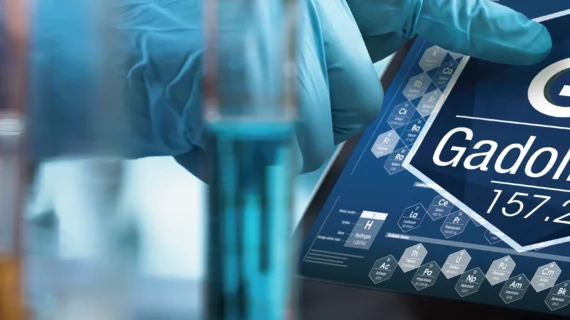Gadolinium retention confirmed in gliomas, adjacent normal brain tissue
Researchers have detected gadolinium in gliomas, adjacent normal brain tissue and necrosis tissue in patients who underwent MRI scans, according to new findings published in Neuroradiology. Retention was higher when linear gadolinium-based contrast agents (GBCAs) were used compared to macrocyclic GBCAs.
“Several pathological conditions of the brain parenchyma such as tumor, infection, autoimmune disease, and ischemia may alter the integrity of the blood–brain barrier (BBB) resulting in contrast enhancement,” wrote Aida Kiviniemi, MD, PhD, department of radiology at Turku University Hospital in Finland, and colleagues “Whereas gadolinium accumulation is predictable in diseased brain with disrupted BBB and contrast enhancement, gadolinium retention in brain abnormalities without evident BBB disruption or in adjacent normal brain has not previously been studied.”
The authors studied data from 69 patients with primary glioma who underwent contrast-enhanced MR imaging before surgery. While seven patients were exposed to linear GBCAs, the other 62 patients were exposed to macrocyclic GBCAs.
At the time of surgery, gadolinium was present in 57 percent of glioma samples, 62 percent of normal brain samples and 86 percent of necrotic samples. Gadolinium retention was noted in both enhancing and non-enhancing tumors. The use of linear GBCAs was associated with “significantly higher tumor gadolinium” than macrocyclic GBCA.
“While the brain tumor provides an obvious explanation for gadolinium retention, we additionally found gadolinium deposits in the adjacent normal brain,” the authors wrote. “Furthermore, a small but significant correlation between the amount of gadolinium in the tumor and normal brain was detected implying passage of gadolinium from the site of pathologic brain lesion. While further studies are needed to confirm this association, an interesting question arises whether gadolinium traverses from the region of brain lesion to neighboring sites in other brain abnormalities such as ischemia, infection, or multiple sclerosis.”
Kiviniemi and colleagues noted the significance of gadolinium retention in the brain is still unclear, but the European Medicines Agency recommended that certain linear GBCAs no longer be used. In the United States, meanwhile, the FDA requires warning labeling on all GBCAs.

